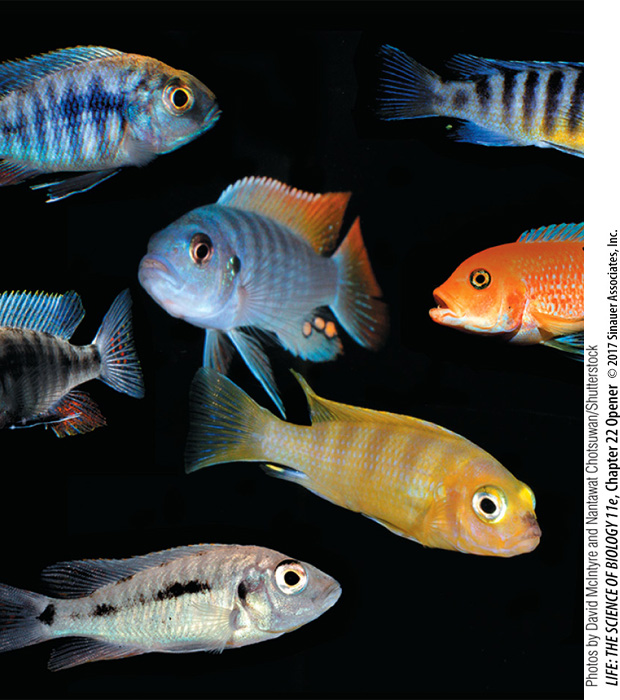Chapter Introduction
22
key concepts
22.1
22.2
22.3
22.4
22.5
Speciation

investigating life
Rapid Speciation in African Lake Cichlids
Not quite 2 million years ago, a tectonic split in the Great Rift Valley of East Africa led to the formation of Lake Malawi, which lies between the modern countries of Malawi, Tanzania, and Mozambique. A few fish species entered the new lake, including a type known as a haplochromine cichlid. Today the descendants of this early invader include nearly 1,000 species of haplochromine cichlids. All of them are endemic to Lake Malawi—
By studying the history and timing of speciation events in Lake Malawi, biologists have pieced together some of the processes that led to so many cichlid species. The earliest haplochromine cichlids to enter the new lake encountered diverse habitats in Lake Malawi, as some shores were rocky and others were sandy. Cichlid populations quickly adapted to these distinct habitat types. Fish in rocky habitats adapted to breeding and living in rocky conditions, and those in sandy habitats evolved specializations for life over sand. These changes resulted in an early speciation event.
Within each of these major habitat types, there were numerous opportunities for diet specialization. Various populations of cichlids became rock scrapers, bottom feeders, fish predators, scale biters, pelagic zooplankton eaters, or plant specialists. Each of these feeding specializations requires a different mouth morphology. The offspring of fish that bred with fish of similar morphology were more likely to survive than were fish with two very different parents. These differences in fitness led to the formation of many more new species, each adapted to a different feeding mode.
The Lake Malawi cichlids continued to diverge and form new species. Male cichlids compete for the attention of females through their bright body colors. Diversification of the body colors of males, and of the preferences of females for different body colors, led to many more new species of cichlids, each isolated from the other by its sexual preferences. Now biologists are studying the genomes of these Lake Malawi cichlids to understand the details of the genetic changes that have given rise to so many species over so little time.
If speciation typically takes thousands to millions of years, how do biologists conduct experiments to study this process?